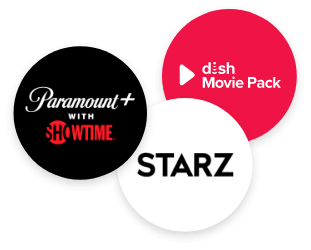Understanding Internet Service Provider Contracts

Table of Contents
Ever signed up for internet service only to discover your “lightning-fast" connection crawls during peak hours? Or maybe you’ve been hit with unexpected fees buried in paragraph 37 of your contract? You’re not alone in this contractual maze of frustration.
Internet access isn’t just a luxury anymore—it’s oxygen for our digital lives. We stream work meetings, binge our favorite shows, help kids with homework, and stay connected with family across continents. But standing between us and this lifeline is often a complex, jargon-filled contract that might as well be written in hieroglyphics.
Let’s discuss everything you need to know about Internet Service Provider contracts and Service-Level Agreements. We’ll translate the technical jargon into plain English, helping you understand precisely what you’re signing up for and how to ensure you’re getting what you pay for.
What Is an Internet Service Provider Contract?
An Internet Service Provider contract is the legal agreement that governs your relationship with the company piping internet into your home or business. Think of it as the rulebook for your digital connection to the world. These contracts outline what service you’ll receive, what you’ll pay, and what happens when things go wrong.
These agreements typically cover the type of service you’ll receive: fiber, cable, DSL, or satellite internet. They specify your speed tier (though often with careful wording like “up to" certain speeds), monthly costs, potential additional fees, length of commitment, equipment policies, data limitations, and privacy practices.
Most people treat these contracts like the software terms and conditions we pretend to read before clicking “I Agree." However, understanding the details can prevent bill shock and help you determine whether you’re getting the service you deserve.

Varying levels of service guarantees
Types of Internet Service Agreements
Not all internet contracts follow the same template. Depending on your needs and situation, you’ll encounter different types of agreements with varying levels of service guarantees.
Residential agreements are designed for home users and typically offer tiered speed options at different prices. They often feature shared network resources, so your connection might slow down during peak usage hours when all your neighbors are streaming Netflix. These agreements usually provide essential technical support during standard business hours and may include data caps that limit how much you can download each month.
Business agreements cost more but provide enhanced reliability for companies that depend on consistent internet access. These contracts typically include stronger performance guarantees, dedicated customer support lines, static IP addresses for hosting services, and often symmetrical speeds that upload as quickly as they download. When business internet goes down, providers respond more urgently than they might for residential outages [1].
Enterprise agreements are custom-tailored for large organizations with complex networking requirements. These contracts offer guaranteed bandwidth allocations, 24/7 technical support with rapid response times, multiple connection points for redundancy, and detailed Service Level Agreements with significant penalties for service failures [1].
Decoding Service Level Agreements (SLAs)
Your contract’s Service Level Agreement section might be the most important part you’ve never read. This section defines the performance standards your provider promises to deliver, serving as your measuring stick for holding them accountable.
Speed guarantees form the cornerstone of most SLAs. Your agreement should specify download speeds (how quickly you can retrieve data from the internet) and upload speeds (how fast you can send data out). Pay close attention to language like “up to" before a speed number, which means that’s the maximum theoretical speed under perfect conditions—not necessarily what you’ll experience daily.
Uptime promises address the reliability of your connection. Business-grade internet might guarantee 99.9% uptime, which allows for about 8.8 hours of downtime annually. Residential contracts often have looser uptime guarantees or none at all. When evaluating uptime commitments, ask whether scheduled maintenance windows count against this percentage.
Latency commitments address how quickly data travels between your computer and its destination. Lower latency creates more responsive connections for video calls and online gaming. Quality SLAs will specify maximum latency measured in milliseconds, with lower numbers being better.
Packet loss standards address data transmission quality. When data packets fail to reach their destination, you experience degraded quality in real-time applications like video streaming or conference calls. Strong SLAs specify acceptable packet loss thresholds, typically under 1%.

Test your internet speed
Monitoring Internet SLA Performance
Understanding your provider’s promises is just the beginning. You also need practical ways to verify that they are delivering what you’re paying for.
Regular speed testing provides a simple way to check your connection’s performance. Use reliable testing—like this one—at different times of day to establish performance patterns. For the most accurate results, connect your computer directly to your modem via Ethernet cable rather than using Wi-Fi, close other bandwidth-intensive applications, and test at various times to account for peak usage periods.
Network monitoring tools provide more comprehensive insights for those who want detailed performance data. Applications like Obkio continuously track metrics, including real-time speeds, latency, packet loss, and connection reliability. These tools can also automatically document performance issues, creating evidence to present when discussing service problems with your provider.
Documentation practices shouldn’t be overlooked when tracking service issues. Keep detailed records of outages, including dates, times, duration, and error messages. Screenshot speed test results that show underperformance, and always record support conversation details including representative names and ticket numbers. This paper trail becomes invaluable when negotiating with your ISP or seeking remedies for poor service.
Common Contract Terms to Watch For
When reviewing an ISP contract, certain sections deserve special scrutiny before you sign on the dotted line.
Data caps and throttling policies have become increasingly common as streaming services drive bandwidth consumption higher. Many ISPs limit how much data you can use monthly, after which they might charge overage fees, slow your connection, or temporarily suspend service. These caps typically range from 250GB to 1.2TB monthly. If you work from home, stream 4K video regularly, or have multiple heavy internet users in your household, these limitations could significantly impact your experience.
Price increases after promotional periods catch many customers by surprise. That attractive introductory rate might double after 6-12 months. Your contract should clearly state the promotional period length, the regular price you’ll pay afterward, whether you’ll receive notification before the increase takes effect, and any options for extending promotional pricing. Some contracts even include automatic annual price increases regardless of promotional status.
Early termination fees create financial penalties for breaking your contract before its term expires. These fees might be a flat amount (often $100-$300) or calculated based on remaining months in your commitment. Some providers prorate these fees, reducing them monthly throughout your contract term. Look for any exceptions to these penalties, such as moving to an address where the provider doesn’t offer service.
Auto-renewal clauses can trap you in continuing service when you might prefer to negotiate new terms or switch providers. Many contracts automatically renew for another term unless you specifically cancel within a designated window, which might be 30-60 days before your current term ends. Pay attention to the required cancellation method, which often must be in writing rather than by phone.
Equipment rental versus ownership presents a significant long-term cost consideration. Most providers offer networking equipment either through monthly rental fees or one-time purchase options. While renting provides technical support and free replacements for malfunctioning equipment, purchasing your own compatible modem and router often saves hundreds of dollars over time.

Contact your ISP if unsatisfied
What To Do If Your ISP Isn’t Meeting SLA Requirements
When your internet service consistently fails to meet promised standards, you have several pathways to resolution.
Document and report issues systematically by gathering concrete evidence of performance problems. Run multiple speed tests at different times, record outage durations with timestamps, save error messages, and even record video demonstrations of problems when applicable. Report these issues through official support channels, always request a ticket number for reference, and follow up regularly on unresolved problems.
Request service credits when your provider fails to meet guaranteed standards. Many SLAs include provisions for compensation when service falls short. These credits typically provide a pro-rated refund based on downtime duration but usually require a formal request within a specific timeframe after the incident. While business-grade SLAs might include automatic credits for verified downtime, residential agreements often require persistence to receive compensation.
Escalation paths become necessary when standard support channels prove ineffective. After working with front-line representatives, ask to speak with a supervisor who may have greater authority to resolve your issue. For persistent problems, contact your provider’s retention department, which typically has more flexibility to offer solutions to prevent customer departures. As a last resort, filing complaints with your ISP’s executive customer service team or regulatory authorities like the FCC can sometimes break through bureaucratic roadblocks.
Switching providers sometimes becomes the only viable solution for ongoing service failures. Before making this transition, research available alternatives in your area, understand any early termination fees with your current provider, and verify that a new provider can actually deliver the service you need. When possible, schedule overlapping service to avoid internet downtime during the transition.
Negotiating Better Terms With Your ISP
Many consumers don’t realize that ISP contracts often have room for negotiation, especially in markets with multiple providers competing for customers.
Research competing offers before approaching your current provider. Knowledge of what competitors charge for similar service levels provides powerful leverage in negotiations. Note specific promotional offers available in your area, understand which features matter most to your usage patterns, and recognize that providers factor customer acquisition costs into their retention decisions.
Timing your negotiations strategically improves your chances of success. The period near your contract’s end provides maximum leverage since providers want to prevent customer departures. Similarly, when competitors launch new services in your area, existing providers often become more flexible with terms. Common promotional periods like back-to-school seasons or holidays often coincide with greater negotiation flexibility.
Effective negotiation tactics combine politeness with persistence. Specifically mention competitive offers you’ve researched, reference your payment history and loyalty length, and ask to speak with the retention department. While you should always be respectful, demonstrating willingness to cancel service (or at least convincingly suggesting you might) often unlocks the best offers.
Focus negotiation efforts on commonly flexible terms including monthly rates, speed tier upgrades, equipment rental fee waivers, data cap adjustments, contract length commitments, and installation or activation fees. While not every aspect of your service agreement will be negotiable, providers frequently have latitude on these specific elements.
Find Internet Providers in Your Area Today
With your new understanding of internet contracts and SLAs, you’re ready to find the provider that delivers on its promises. Whether you need blazing-fast fiber for your home office, reliable cable for family entertainment, or specialized service for gaming or content creation, knowing what to look for in your agreement helps you secure the best possible connection.
Don’t waste another day dealing with buffering videos, dropped video calls, or mysterious slowdowns. Enter your zip code here to discover all available internet options in your neighborhood. Our comparison tool makes it easy to evaluate speeds, prices, contract terms, and customer satisfaction ratings side-by-side, helping you find the perfect match for your digital lifestyle.
Remember, the right internet service isn’t just about maximum speed numbers—it’s about consistent, reliable performance backed by customer service that respects your time and a contract that clearly outlines what you’re paying for.
Sources
[1] Obkio.com. “How to Monitor Internet SLAs (Service-Level Agreements)"
[2] Aaronhall.com. “What Is an Internet Service Provider (ISP) Agreement?"












 Call
Call 

 Access Your Account
Access Your Account